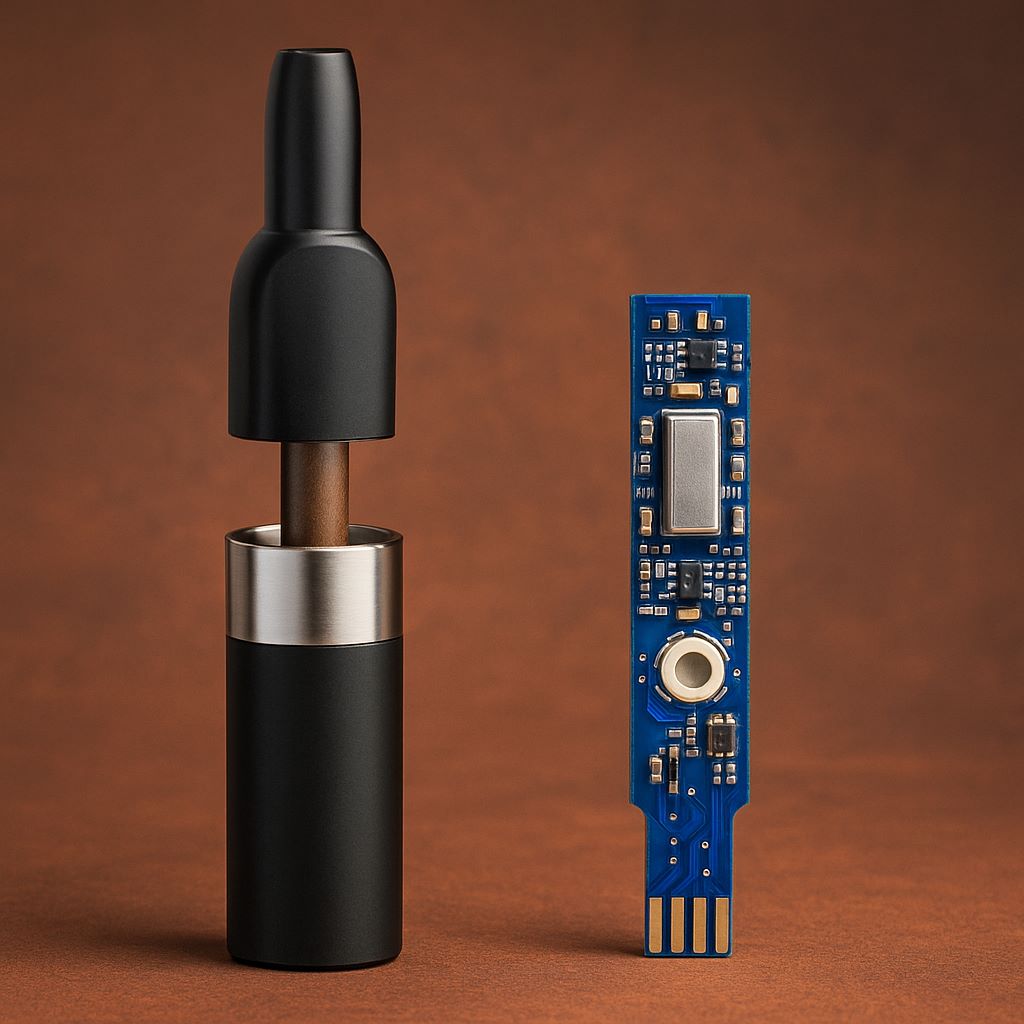Tobacco Heating Enters the Modular Age
In the growing landscape of smoke-free alternatives, modular tobacco cartridges are quickly becoming the preferred format for next-generation devices. These replaceable heating solutions allow users to reload a device without replacing the entire unit. Cependant, beneath this apparent convenience lies a deeply complex engineering challenge. Particularly, the integration of efficient, compact, and intelligent PCB control within limited spatial confines presents new demands for device designers and manufacturers.
As RIMYI continues to push the boundaries of customized heating module PCB integration solutions, we take a deep look into the evolution of heating module PCB integration. We also highlight the real-world challenges faced by engineers trying to balance heating efficiency, battery life, leak prevention, and manufacturing scalability.
Structural Evolution of Modular Tobacco Cartridges
In early designs, heating modules and tobacco storage were permanently embedded. While this simplified circuit layout, it also limits flexibility, increases waste, and raises the cost of long-term use. With the growing demand for sustainable, user-friendly, and modular tobacco systems, manufacturers started to separate the heating element from the cartridge body. This evolution encouraged reusability and compliance with regional health regulations by reducing device discard rates.
The modern modular tobacco cartridge is typically composed of:
- A refillable tobacco chamber
- A replaceable or contact-based heating module
- A leak-proof sealing mechanism
- Connectors or flexible contacts to interface with the main PCB
These advancements offer improved usability. Yet they also introduce critical integration points where failure is more likely. Par exemple, physical connectors between the cartridge and the heating module are vulnerable to moisture, temperature stress, and user mishandling. These must be supported by intelligent PCB designs that account for all edge cases.
Heating Module PCB Integration: Why It’s Challenging
The primary role of the PCB in a tobacco heating system is to regulate power delivery, protect the user from faults, and optimize energy efficiency. With modular cartridges, the complexity increases significantly.
Limited Space, Unlimited Responsibilities
The space available for PCB integration is minimal. Yet the board must include:
- Heating element drivers
- Overheat protection
- Short circuit protection
- Battery management systems (BMS)
- Real-time temperature monitoring
- User interface feedback (vibration, lights, or screen)
En outre, modular systems demand a quick response time. The user expects near-instant heat-up and steady performance with each cartridge. This imposes pressure on firmware optimization, thermal control, and real-time diagnostics.
Connector Reliability and Signal Integrity
One of the biggest technical hurdles lies in achieving reliable connections between removable cartridges and the PCB. Repeated insertion and removal cycles can loosen contacts, degrade conductivity, and create false triggers. En plus, the signal integrity for temperature feedback or current sensing must remain uncompromised despite physical modularity.
To mitigate this, engineers employ gold-plated connectors, spring-loaded pins, and adaptive contact calibration through the firmware. Such approaches ensure each cartridge receives precise heating cycles without fluctuation or hazard.
Tackling Leakage: The Invisible Threat
Liquid leakage, especially from refillable tobacco chambers, poses a serious risk. Not only does it endanger circuit components, but it also impacts heating consistency and user safety.
Designers must account for several causes of leakage:
- Overfilling or incorrect cartridge assembly
- Condensation accumulation
- Material expansion during heating
Leak-proof designs must include:
- Silicone sealing rings and thermal insulation
- Separated air and liquid pathways
- Moisture-resistant PCB coatings (e.g., parylene)
Beyond hardware, the firmware must actively detect moisture intrusion. Many PCB boards integrate humidity sensors that trigger alerts or lock heating if risk thresholds are exceeded. This layered strategy of hardware plus intelligent software forms the foundation of reliable operation.
Balancing Power and Battery Life
Another core challenge is optimizing energy usage. Users expect long-lasting performance, especially in portable formats. Cependant, heating elements are power-hungry. The PCB must therefore maximize power efficiency without sacrificing thermal speed.
Key strategies include:
- Using high-efficiency MOSFETs for switching
- Incorporating pulse-width modulation (PWM) to control heating
- Adaptive power control based on cartridge type
De plus, intelligent battery management is essential. Modern PCBs must handle:
- Overcharge and over-discharge protection
- Accurate battery level prediction
- Fast charging compatibility (USB-C)
By combining low-power chipset architecture with advanced algorithms, RIMYI boards offer a best-in-class energy-to-heat ratio.
Toward a Smarter User Experience
The evolution of PCB design doesn’t just serve internal needs—it enhances user satisfaction. Advanced cartridges with embedded memory chips can store heating preferences, usage count, or diagnostics. These features enable:
- Cartridge authentication
- Personalized heat profiles
- Predictive maintenance alerts
En plus, visual feedback via LED lights or displays boosts user interaction. The PCB must support these components with sufficient I/O ports, programmable logic, and power regulation.
Conclusion: Innovation Demands Integration
The transition from static, disposable vape systems to dynamic, modular heating cartridges reflects the industry’s maturation. Cependant, this evolution is not without engineering challenges. From leak-proofing and connector reliability to battery life and real-time control, success lies in the synergy between structural design and PCB intelligence.
À Rimyi, we specialize in delivering precisely this synergy. Our modular heating PCB solutions are trusted by global e-cigarette manufacturers for their reliability, innovation, and compliance.
By continuously investing in advanced components, firmware logic, and rigorous testing, we help our clients stand out in a competitive market. For those looking to lead in the next generation of tobacco heating devices, the right PCB partner makes all the difference.

